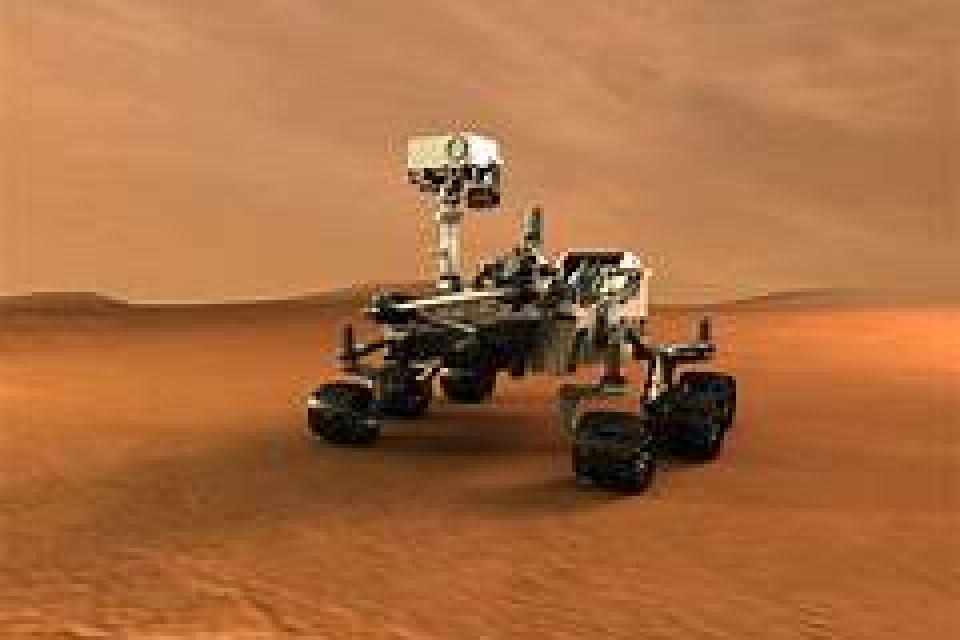Datasets
Standard Dataset
Mars Rovers
- Citation Author(s):
- Submitted by:
- Eman Nashnush
- Last updated:
- Sat, 11/04/2023 - 21:43
- DOI:
- 10.21227/v3hs-pj49
- License:
 445 Views
445 Views- Categories:
- Keywords:
Abstract
This data can be used for all the experiments related to the Mars rovers, as this data are accurate and used in a new algorithm called Limited Weighted Sum Genetic Algorithm for Multi-Objectives optimisation (LWSGA-MO).
The Mars exploration rover dataset is created in two steps: the data generation, and the data processing.
1) The data generation was done by Unity, and the code was written by C# scripts.
2) The data processing was done by RStudio and R.
In particular, the readme.txt document is included and it gives a brief summary of the data collected by the two programs too. This data is uploaded in a series of txt files that contain the fitness scores of each generation's best rover and the data required to build that individual rover. There are also a series of folders appropriately named after each EA which contains a snapshot of each generation's fittest rover.
This data has been tested and evaluated in a new optimization algorithm called (LWSGA-MO) and got great results, all the details of all the experiments have been described in a paper under the title “ A Novel Evolutionary Multi-Objective Optimisation Algorithm for Space and Industrial Environment Applications.”
In this work, the proposed solution was based on NASA planned presidential budget request (PBR) for years from year 2022 to 2026, which represents an appeal of $3.196.3 million for planetary science in the year 2023, and in 2026 the planetary science department will receive $3,168.7 million, which is less fund with the same plan of 31 future missions as found in this link fy2022_budget_summary.pdf (nasa.gov); it shows the Fiscal Year 2022 president’s budget request summary for NASA in the next 3 years until 2026 to manage missions that explore the planetary bodies of the solar system. The NASA planetary science department will receive the lowest fund during the 5 years from 2022 to 2026 for all the planetary science projects; that amount will drop from $3,200.0 million to $3,168.7 million in 2026. In order to achieve this, Mars rovers must be cost-effectively launched from low earth orbit and lightweight enough to traverse a simulated environment and explore the solar system. Thus, the new proposed evolutionary algorithm (LWSGA-MO) is used to find a solution set of Martian rovers in the simulated environment that are lightweight, cost-effective and have the ability to move successfully in the simulated terrain.
The data uploaded is a series of txt files that contain the fitness scores of each generation's best rover and the data required to build that individual rover. There are also a series of folders appropriately named after each EA which contains a snapshot of each generation's fittest rover.
* Summary *
This folder contains two applications, RStudio and Unity, labelled respectively. Below you will find instructions on how to open each application for review.
** RStudio **
RStudio is the name of the IDE used to run scripts written in R. Although possible to open and read R scripts using Notepad, the execution of these scripts will require R and optionally RStudio [NOTE: RStudio makes the visualisation of the data easier than attempting to view the images without it]. The links for both R and RStudio are provided below.
RStudio can be downloaded here:
https://rstudio.com/products/rstudio/download/
R programming language can be downloaded here:
https://cran.r-project.org/mirrors.html
[NOTE: this project downloaded a mirror of R from the link above provided by Imperial College London in the UK]
The RStudio folder contains a scripts folder. The script called "functions_list" stores the functions I created to run the statistical tests and data analysis/modification.
The script "individual_statistics" is the main file which calls the functions in the functions_list script.
The final script, "demonstration_app", contains the application which was used during the demonstration of the project to visualise and interact with the data.
As well as scripts, the RStudio folder contains a folder called "Data". This folder is categorised based on the respective evolutionary algorithms that generated the data. Files postfixed with "data.txt" are the data files containing all the information related to the simulation. Files postfixed with "fittest.txt" contain the instructions for that evolutionary algorithms best rover, which can be rebuilt in the simulation. Finally, the folders postfixed with "images" contains a picture of each generation's fittest rover.
** Unity Program **
The easiest method to run this program is to install Unity and Unity-Hub. Using Unity-Hub, an option to "Add" a project will appear and the folder called "MultiObjective optimisation using EA" can be selected. Once done, the project can be opened and ran. Alternatively, you can navigate to the "Assets" folder which contains the scripts used to build the application (in the "scripts" folder) and the scripts used to test the application (in the "Editor" folder). The GameObjects/Assets created and added to the simulation are found in the "resources" folder.
Download Unity, and Unity-hub, here:
Dataset Files
- Scripts file UnityAssets.zip (8.31 MB)
- Readme file README.txt (2.42 kB)
- Mars rover- Data description Data_set.ZIP (4.65 MB)







Comments
In this work a new algorithm called Limited Weighted Sum Genetic Algorithm for Multi-Objectives optimisation (LWSGA-MO) which is a modified WBGA that allows weights to be limited or prioritised when an upper limit is unknown. The new algorithm LWSGA is used to evaluate the effectiveness of multi-objective optimisation when designing Martian rovers by using genetic algorithms within a simulated environment.